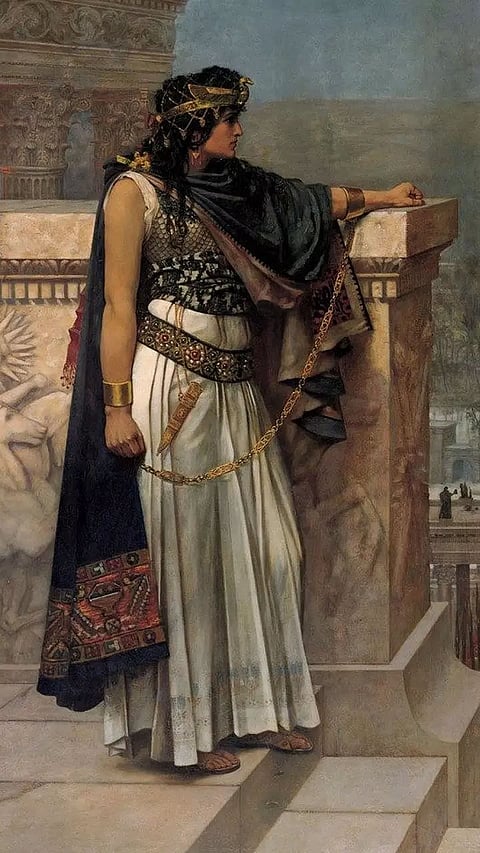Tomyris of Central Asia, 6th Century BCE
As the archrival of Cyrus the Great, King of Persia, Tomyris ruled the Massagetae. Cyrus came to Tomyris wanting to marry her, but she wisely saw that his desire for conquering her tribes drove his proposals. He made many attempts to woo and conquer the Massagetae, including a slaughter at a feast where Cyrus murdered Tomyris’s child. Tomyris led her warriors against Cyrus’s army, besting them and taking Cyrus’s head.
Artemisia I of Modern Turkey, 5th Century BCE
An ally to famed Persian Xerxes, Artemisia was Queen of Caria in Asia Minor. In contrast to Xerxes, during the Battle of Salamis Artemisia didn’t watch her troops fight from shore or afar. She sailed in with her five ships against the Greeks on behalf of the Persians, narrowly missing disaster when she was trapped between the two powerful armies. As a result of her astute strategy, Xerxes made her a key advisor.
Zenobia of Palmyra, 3rd Century CE
Queen of Palmyra in modern Syria, Zenobia rose to become one of the Roman Empire’s biggest enemies. After conquering her lands in Syria, expanding in Egypt and other areas of Asia Minor, she declared herself independent of Rome in 269 CE.
Mavia of Arabia, 4th Century CE
Mavia was another queen leading nomadic tribes in modern-day Syria a century after Zenobia. Following the common theme, Mavia rose to power after her husband died, and refused to cooperate with the Roman rulers who wanted to conscript her people. In response to Emperor Valens’ demand for auxiliaries, Mavia instead began conquering neighboring cities and towns. Her military dominance had the Romans fleeing her troops in their strongholds like Egypt.
The Trung Sisters of Vietnam, 1st Century CE
These brave sisters fought against the Chinese who dominated their country in the 0030s and 0040s CE. The elder sister, Trung Trac was widowed in the violence. Along with Trung Nhi, they rebelled against their Chinese governor and won, declaring themselves joint Queens of their land. However the forces they had compiled and trained were not strong enough to withstand further attacks by the Chinese
Queen Seondeok of Korea, 7th Century CE
Queen Seondeok was a Warrior Queen in the Silla region of Korea, reigning from 632-647 CE. She was the first woman ruler in the region, and only the second woman to rule in East Asia at the time. She rose to power after demanding her father, King Jinpyeong, allow her to fight for the position against the son-in-law the King had been considering. As the first woman to reign, Queen Seondeok has to prove herself to gain the trust of her people. Once she did, she made her priority the well-being of the people of Silla
Pingyang of China, 7th Century CE
Pingyang was the daughter of a military commander and wife of the leader of the emperor’s palace guard. Her Army would eventually grow to 70,000 and she prohibited them from looting, raping and pillaging under a strict code of conduct. The emperor Yangdi dismissed Pingyang at his own peril because she was just a woman. Her troops eventually joined those of her father’s and husband’s, defeating Yangdi and creating the Tang Dynasty.
Tomoe Gozen of Japan, 12th Century CE
Tomoe Gozen was an exceptionally beautiful woman who fought alongside men during the Genpei War from 1180-1185. She was a skilled swordswoman, rider and archer. She became the first captain to Minamoto no Yoshinaka in the war, and fought to control the shogunate with 300 samurai against their enemies the Taira.

